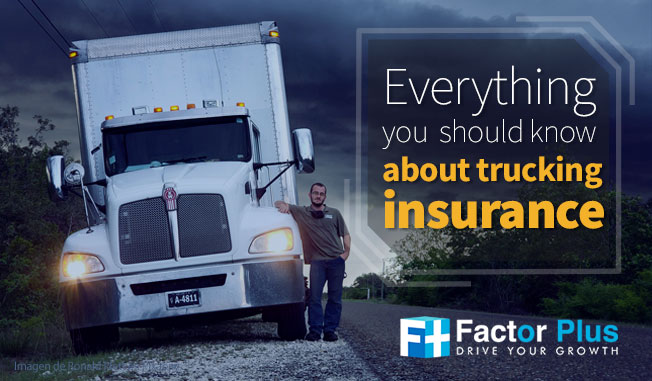If you are starting your trucking company or trying to catch up with more opportunities to upgrade your company, this article is for you. Discover what kind of truck driver insurance coverage you need for running your business like a clock.
Now you can listen to our blog posts!
If you are a commercial carrier working as an owner-operator, there are certain types of insurance for every situation. Learn about these and how freight factoring can help you increase your cash flow and save more money when acquiring trucking insurance.
Types of Insurance for Truck Drivers
There are several types of insurance for owner-operators and truck drivers. Here is a list of what these insurance policies cover:
• General liability insurance to protect against most types of damage.
• Motor truck cargo insurance to cover cargo.
• Physical damage coverage insurance that covers physical property damage.
• Primary liability insurance for bodily injury and property damage. Each of these is necessary for various aspects of the trucking job.
What Insurance Covers for Truckers
Insurance for truck drivers is needed to protect truck drivers, their trucking equipment, and their cargo. Additionally, accident coverage is required to protect the public and property, such as telephone lines and roads, that could be damaged in an accident. To begin working as an owner-operator, you need to get insurance immediately.
Typical Price of Insurance for Truck Drivers
The typical price for truck driver insurance is the same across all US states and regions. This amount includes the general coverage expectations of the trucking industry. “Most trucks hauling most commodities must have a minimum of $750,000 of primary liability coverage,” states JWD Insurance.
If you have a trucking company that hauls high-value cargo, you most likely need a one million insurance policy to get bids. That means your insurance company can pay out at least one million dollars in an accident. The high valuation concerns the price of truck driving equipment and freight. However, truck drivers are not expected to pay this amount for insurance. According to Progressive Commercial insurance, “Our national average monthly cost for commercial truck insurance ranged from $640 for specialty truckers to $982 for transport truckers.” Trucking insurance pricing is also affected by how a truck driver performs commercially. If you have a poor Compliance, Safety, Accountability (CSA) Score as a trucker, you can expect to pay more for trucking insurance.
How to Get Trucking Insurance
Before obtaining truck driver insurance, you must be prepared to provide several key documents. Additionally, you must show proof of insurance before you can get hauls as a truck driver working as an owner-operator. Here is what you need to have to visit an insurance broker.
What to Bring to an Insurance Broker
• Commercial Driver’s License (CDL).
• Department of Transportation (DOT) physical card.
• The idea of cargo valuation for pricing coverage.
• List of haul types you will transport.
• Previous insurance coverage.
For most truck drivers, the choice of a trucking insurance broker will be determined by whoever provides them with their current insurance. Most insurance has commercial truck driver insurance. As long as you have your documents in order and everything is legit, you most likely can acquire trucking insurance over the phone or the internet. Don’t forget to ask for recommendations from fellow truckers to pick the company that suits you the most. Checking online reviews is always a must and ask for discounts and offers they can provide to make a great deal!
Fast, Easy, and Safe Funding for your Insurance Costs
Paying for new business costs as an owner-operator can be taxing – literally. Save money and time. At Factor+, we know about financing. Discover more about our Freight Factoring Programs and unlock the potential of your outstanding invoices to accelerate payments and boost your cash flow. This way, paying your operating costs will be easier! Contact us and discover our benefits to keep your business running and your back-office burden low.

